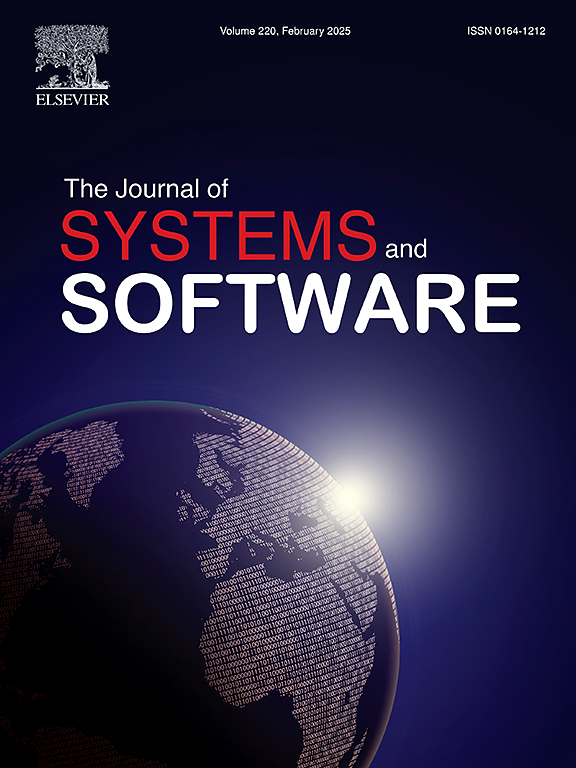Enhancing concurrency vulnerability detection through AST-based static fuzz mutation
IF 3.7
2区 计算机科学
Q1 COMPUTER SCIENCE, SOFTWARE ENGINEERING
引用次数: 0
Abstract
As multi-threaded and highly concurrent programs are increasingly used, their inherent uncertainty significantly impacts program stability. Traditional testing methods often struggle to effectively detect specific concurrency vulnerabilities because these vulnerabilities are triggered only under particular circumstances, making detection at the vulnerability-triggering level challenging. In view of this, we propose a static fuzz mutation testing method based on Abstract Syntax Tree (AST). This method leverages the fine-grained granularity of ASTs to optimize test suites for concurrency vulnerabilities detection. Initially, We analyze and classify the concurrency vulnerabilities found in Go source code, and generate vulnerability feature mutation operators (mutation operators with concurrency vulnerability feature). Next, we propose static fuzz mutation method and heuristic algorithms at the AST level and apply them to mutators. Ultimately, we screened over 200 code slices from 8 open-source projects for static fuzz mutation testing. The results indicate that introducing vulnerability feature mutation operators improved the number of mutant by approximately 22.15% across various types of concurrency vulnerability samples. This enhancement elevated the probability of triggering concurrency vulnerabilities in the program. After incorporating data from the Go language standard library, experiments further confirmed that our proposed static fuzz mutation testing method can effectively improve the accuracy of concurrency vulnerability detection.
基于ast的静态模糊突变增强并发漏洞检测
随着多线程和高度并发程序的使用越来越多,它们固有的不确定性极大地影响了程序的稳定性。传统的测试方法常常难以有效地检测特定的并发漏洞,因为这些漏洞只在特定的情况下被触发,这使得在漏洞触发级别进行检测具有挑战性。鉴于此,我们提出了一种基于抽象语法树(AST)的静态模糊突变测试方法。该方法利用ast的细粒度来优化并发漏洞检测的测试套件。首先,我们对Go源代码中发现的并发漏洞进行分析和分类,生成漏洞特征突变算子(具有并发漏洞特征的突变算子)。接下来,我们提出了AST级别的静态模糊突变方法和启发式算法,并将其应用于突变体。最终,我们从8个开源项目中筛选了200多个代码片段进行静态模糊突变测试。结果表明,引入漏洞特征变异算子后,不同类型并发漏洞样本的变异数提高了约22.15%。这种增强提高了在程序中触发并发性漏洞的可能性。在结合Go语言标准库的数据后,实验进一步证实了我们提出的静态模糊突变测试方法可以有效提高并发漏洞检测的准确性。
本文章由计算机程序翻译,如有差异,请以英文原文为准。
求助全文
约1分钟内获得全文
求助全文
来源期刊

Journal of Systems and Software
工程技术-计算机:理论方法
CiteScore
8.60
自引率
5.70%
发文量
193
审稿时长
16 weeks
期刊介绍:
The Journal of Systems and Software publishes papers covering all aspects of software engineering and related hardware-software-systems issues. All articles should include a validation of the idea presented, e.g. through case studies, experiments, or systematic comparisons with other approaches already in practice. Topics of interest include, but are not limited to:
•Methods and tools for, and empirical studies on, software requirements, design, architecture, verification and validation, maintenance and evolution
•Agile, model-driven, service-oriented, open source and global software development
•Approaches for mobile, multiprocessing, real-time, distributed, cloud-based, dependable and virtualized systems
•Human factors and management concerns of software development
•Data management and big data issues of software systems
•Metrics and evaluation, data mining of software development resources
•Business and economic aspects of software development processes
The journal welcomes state-of-the-art surveys and reports of practical experience for all of these topics.
 求助内容:
求助内容: 应助结果提醒方式:
应助结果提醒方式:


